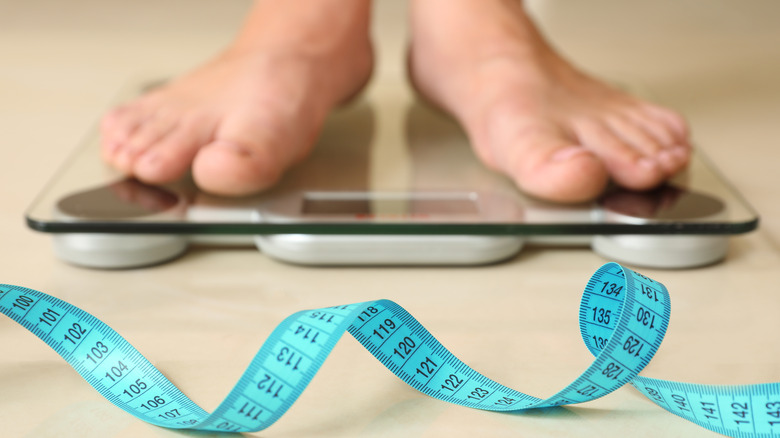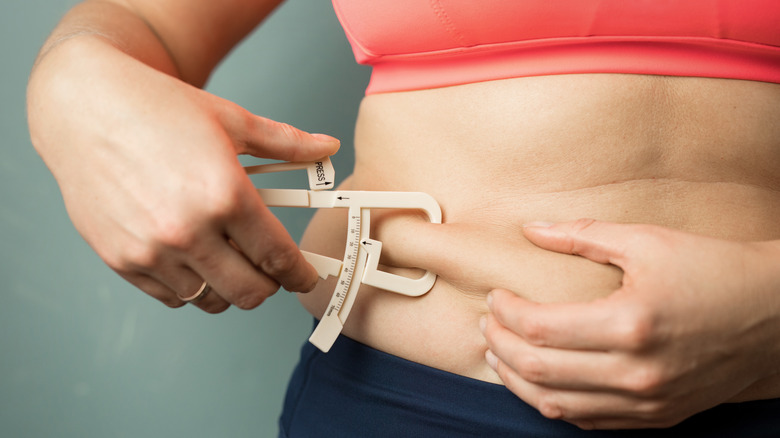The Real Difference Between BMI And Body Fat Percentage
Weight and body fat are very common concerns in our society. There is a variety of measurements used to gain clarity about how our weight and body fat relate to our health. While no measurement is infallible, two of the most common include body mass index (BMI) and body fat percentage.
According to the U.S. Centers for Disease Control and Prevention (CDC), BMI refers to the number achieved when a person's weight in kilograms is divided by the square of their height in meters. This sounds confusing, but fortunately, the National Heart, Lung, and Blood Institute has a calculator that will do all the work for you.
For adults, a healthy BMI is between 18.5 and 24.9. People with a BMI above 29.9 are considered obese. The CDC notes that BMI has a significant correlation with health, and people with a BMI over 30 are more likely to develop diabetes, cardiovascular disease, and other health problems. Because it is free, quick, easy, and generally accurate, BMI is by far the most commonly used measurement to determine whether a person has too much body fat. That being said, BMI does not always tell the whole story, according to the Harvard Medical School.
BMI isn't always accurate
The Harvard Medical School notes that BMI doesn't directly measure body fat — it just evaluates a person's body weight in relation to their height. Generally speaking, body fat does correlate with body weight, but this is not the case for everyone. For example, muscle is denser than fat, so BMI may indicate an athlete has too much body fat when they are really just muscular. Some people can also have excessive body fat, despite being a normal weight, and this can pose many of the same health risks as being overweight, according to the Mayo Clinic.
For a full picture, body fat percentage should be taken into consideration. Body fat percentage measures how much of a person's body consists of fat. People measure body fat percentage with a variety of methods, such as skinfold calipers (per Healthline).
Women naturally store more fat, so their ideal body fat percentage skews a bit higher than it does for men. If a woman stores nothing but essential fat, her body fat percentage will be 10-13%, compared to 2-5% for men. Athletic or fit women will have a body fat percentage of 14-20%, while athletic or fit men have 6-13% body fat. Women with more than 31% body fat and men with more than 24% body fat are considered obese, according to The American Council on Exercise.


